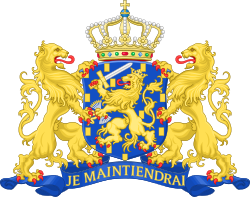Kuyper cabinet | |
|---|---|
| Cabinet of the Netherlands | |
| Date formed | 1 August 1901 |
| Date dissolved | 17 August 1905 (Demissionary from 3 July 1905) |
| People and organisations | |
| Head of state | Queen Wilhelmina |
| Head of government | Abraham Kuyper |
| No. of ministers | 8 |
| Ministers removed | 4 |
| Total no. of members | 11 |
| Member party | 1 August 1901 – 15 October 1904 Independent Catholics Anti-Revolutionary Party 15 October 1904 – 17 August 1905 General League Anti-Revolutionary Party |
| Status in legislature | Right-wing Minority government |
| History | |
| Election | 1901 election |
| Outgoing election | 1905 election |
| Legislature terms | 1901–1905 |
| Incoming formation | 1901 |
| Outgoing formation | 1905 |
| Predecessor | Pierson cabinet |
| Successor | De Meester cabinet |
| Part of the Politics series |
 |
|---|
| |
The Kuyper cabinet was the cabinet of the Netherlands from 1 August 1901 until 17 August 1905. The cabinet was formed by the political party Anti-Revolutionary Party (ARP) and Independent Catholics (I) after the election of 1901. The right-wing cabinet was a minority government in the House of Representatives. Abraham Kuyper, the Leader of the Anti-Revolutionary Party was Prime Minister. [1]








